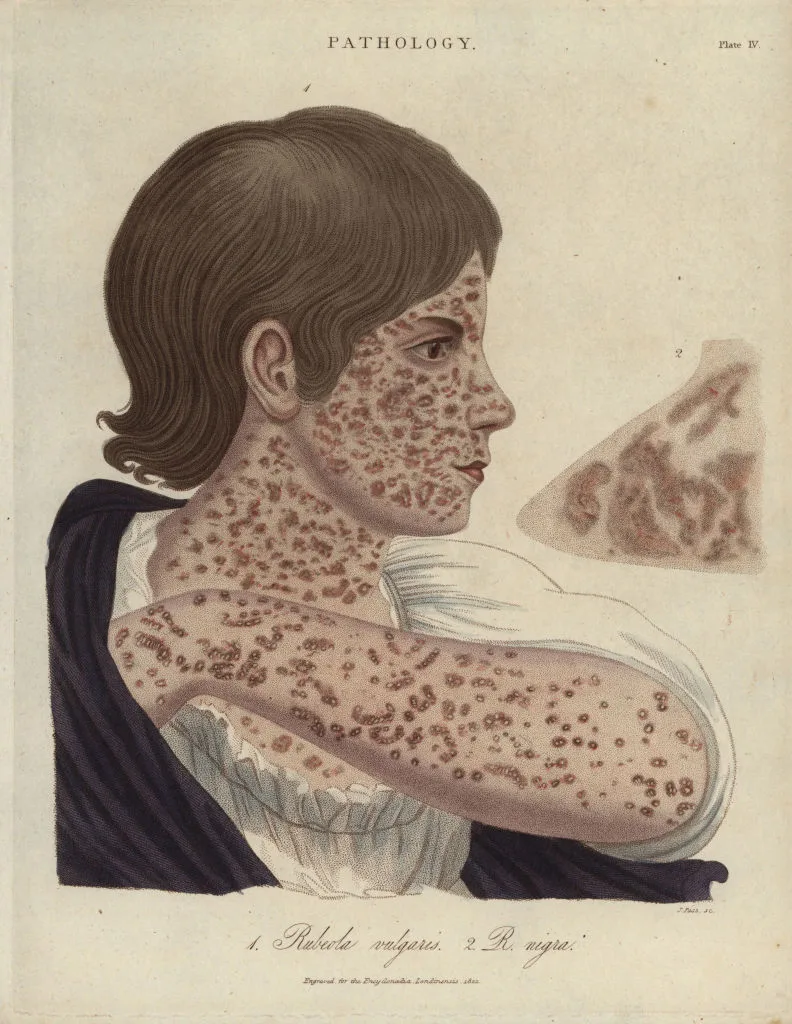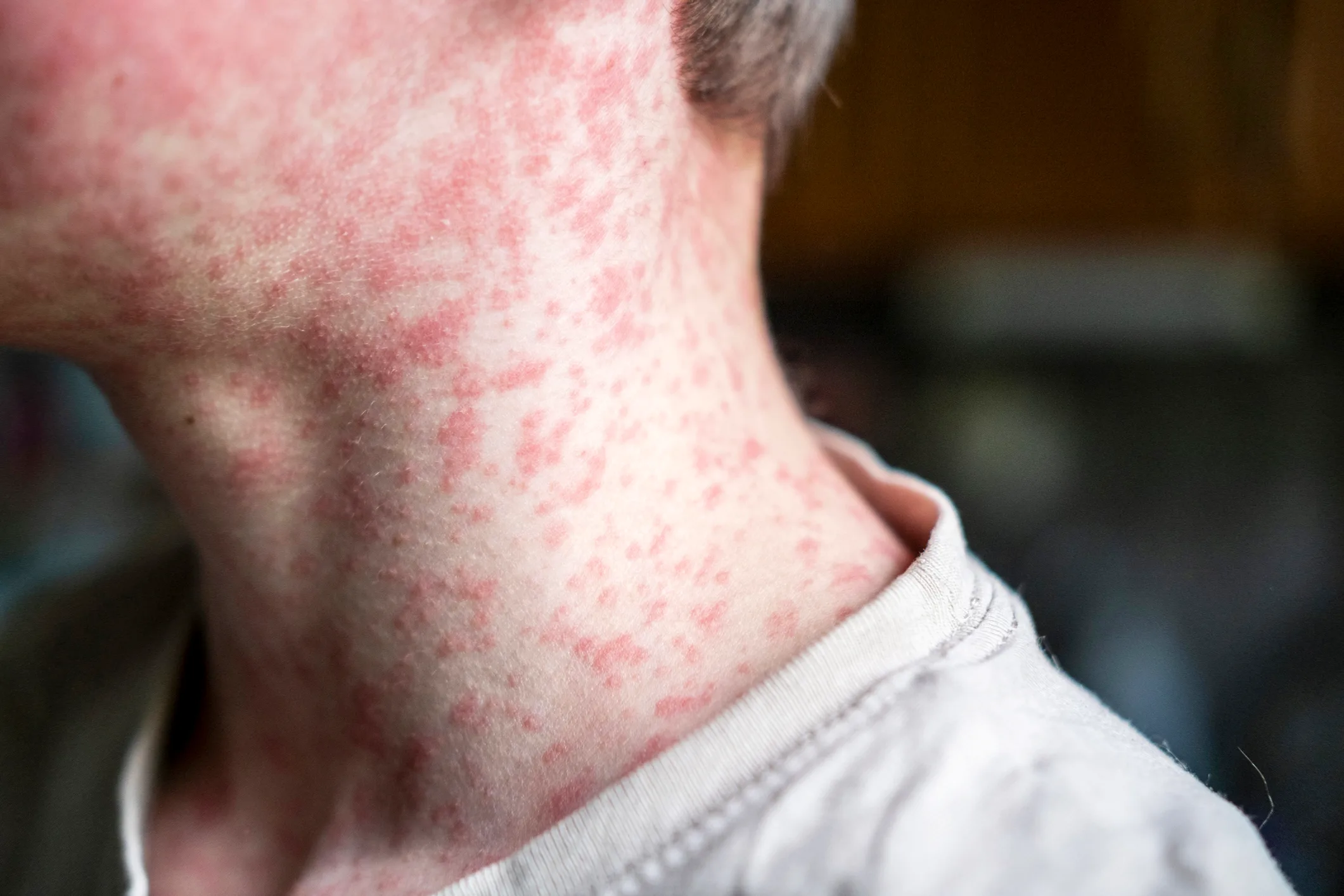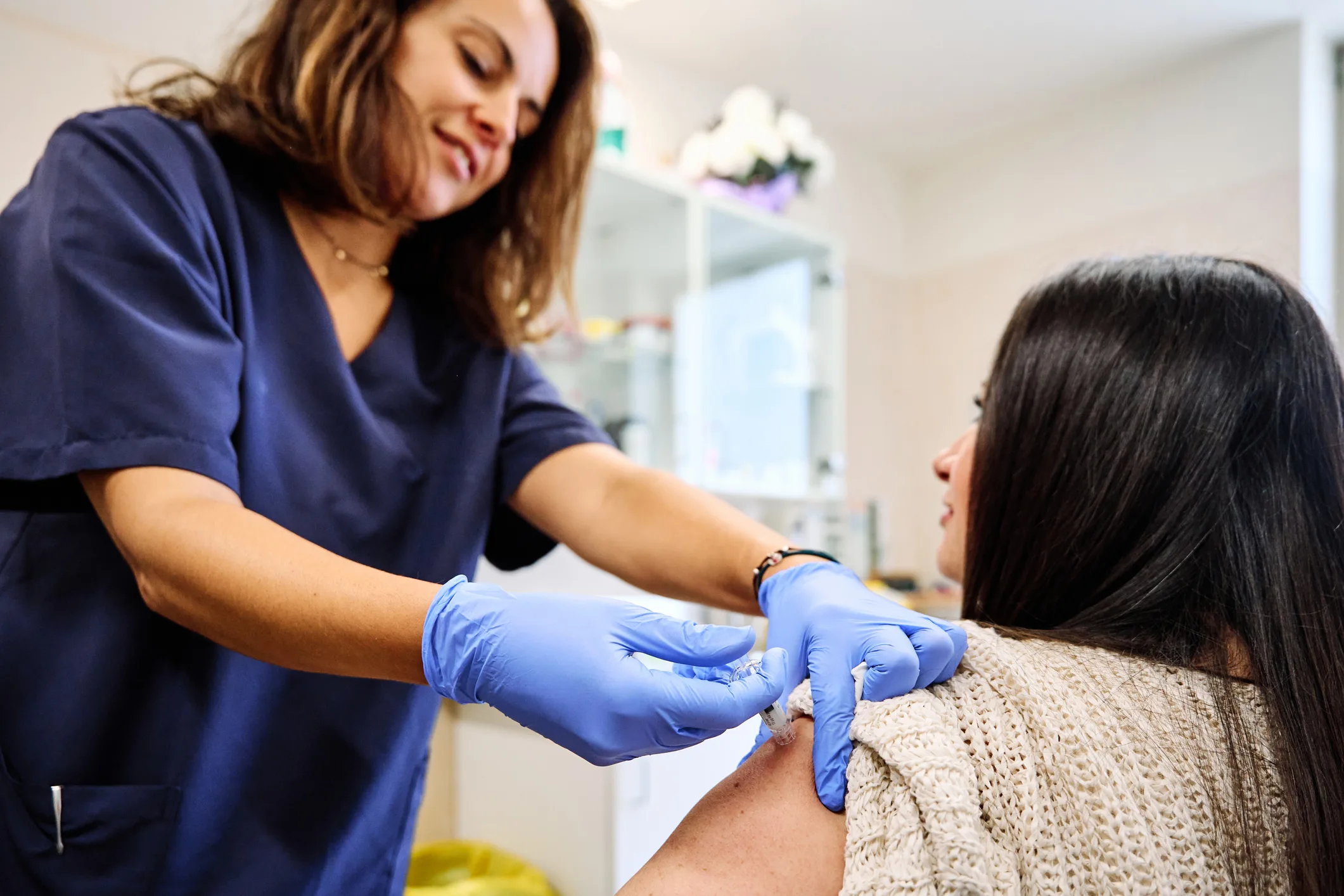Measles outbreak alerts across the globe — including here in Australia — serve as a stark reminder of how highly contagious and potentially dangerous measles can be. Once thought to be relegated to the history books thanks to widespread vaccination, measles has made an unwelcome comeback.
As of March 28, 2025, Australia has reported a total of 33 confirmed measles cases. New South Wales (NSW) accounts for 16 cases, Victoria (VIC) has 14, and there is one case each in the Northern Territory (NT), South Australia (SA), and Western Australia (WA). This marks a significant increase compared to previous years. For instance, in 2024, there were 57 cases nationwide, and only 26 in 2023. Health authorities are concerned about this rise, especially amid declining vaccination rates.
On March 27, WA’s Department of Health released a measles alert for Perth city and its surrounds. Numerous exposure locations are included in its alert, from restaurants to health centres. You can find 30+ sites here.
In March 2025, NSW Health released two measles outbreak alerts. One on March 18 after an infectious individual arrived on an international flight from Ho Chi Minh City, Vietnam, to Sydney Airport and then journeyed to several locations in Sydney. Full details on the individual’s movements can be read here. A second alert was sent out for Newcastle and Lake Macquarie areas on March 25 after three cases were identified. One of those people who has the measles is unvaccinated and also traveled from Vietnam, where there is an ongoing large outbreak of measles. Movements of those individuals can be read here.
Anyone who has been in those locations at the specific times outlined is advised to monitor for symptoms.
“Symptoms to watch out for include fever, runny nose, sore eyes and a cough, usually followed three or four days later by a red, blotchy rash that spreads from the head and face to the rest of the body,” said NSW Health Director of the Communicable Diseases Branch, Dr Christine Selvey.
“It can take up to 18 days for symptoms to appear after an exposure, so it’s important for people who visited these locations to look out for symptoms up until Tuesday, 4 February. If you experience symptoms, please call ahead before visiting your doctor.”

According to the World Health Organisation (WHO), in the 1960s, measles was estimated to kill 2.6 million people every year. However, vaccinations saw that number plummet to 73,000 by 2014.
That same year, healthcare officials declared Australia was free of measles. Unfortunately, despite the vaccine’s success, outbreaks have surged due to a drop in vaccination rates, often fuelled by misinformation.
High vaccination rates (above 95 per cent) are critical for maintaining herd immunity and keeping measles at bay. Furthermore, the WHO has highlighted vaccine hesitancy as one of the top global health threats today.
While it is a preventable disease, it’s also a serious one. Vaccination remains the most effective way to protect yourself, your family, and the community. Here’s everything you need to know.
What causes measles?
Measles is caused by the Morbillivirus, a member of the paramyxovirus family. The virus is transmitted through respiratory droplets.
When someone with measles sneezes, coughs, or even breathes in close quarters, the virus becomes airborne. If you’re unvaccinated and share a space with an infected person, you have a 90 per cent chance of catching it.
What’s more, the virus is so resilient it can linger in the air and on surfaces for up to two hours. Infected people are contagious from about four days before the rash appears until four days after, making isolation crucial.

Signs and symptoms to look out for
Measles symptoms generally come in three stages:
The incubation period
After exposure, it can take 10 to 14 days for symptoms to appear. During this time, the virus replicates, but you won’t feel sick yet.
Early symptoms
During this period, symptoms mimic a cold or flu. Think fever, runny nose, red, watery eyes, and a dry cough. Many describe feeling exhausted and generally unwell.
The rash
A blotchy, red rash begins at the hairline and spreads downwards to cover the face, body, arms, and legs. It usually appears 3 to 5 days after symptoms start. A tell-tale sign unique to measles is the presence of tiny white spots, called Koplik spots, inside the cheeks and mouth.
The difference between measles, German measles and chickenpox
The trio of measles, rubella (or German measles), and chickenpox often cause confusion, but they have key differences:
Measles
Known for its severe symptoms, including high fever, cough, and a widespread rash, measles can lead to complications such as pneumonia or brain swelling.
Rubella (also known as German measles)
Caused by the rubella virus, it presents with milder symptoms, including a fine pink rash, swollen lymph nodes, and low fever. While less dangerous for most, rubella poses serious risks to unborn babies if contracted during pregnancy.
Chickenpox
Caused by the varicella-zoster virus, chickenpox starts with fever and fatigue, followed by an itchy rash that turns into fluid-filled blisters.

How to protect yourself from measles
The best way to stay safe? Prevention. If you’re unsure about your immunisation status, speak to your GP. A simple blood test can confirm whether you’re protected. And if you’ve got kids, keep up with their vaccine schedule – it’s one less thing to worry about.
If you suspect you have measles, isolate immediately and contact your doctor to avoid spreading the virus.
It isn’t just a childhood illness, and in rare cases, it can lead to severe health problems, including pneumonia, ear infections, encephalitis (brain inflammation that can lead to seizures or long-term brain damage) or pregnancy risks like miscarriage, premature birth, or low birth weight.
What to know about the measles vaccine
Today, the vaccine is usually combined with mumps and rubella in the MMR vaccine. And sometimes it also includes chickenpox (MMRV). To be effective, two doses are key: The first dose at 12 months, and a booster at 18 months. These two doses are 97 per cent effective in preventing the disease.
It’s worth noting that if you were born after 1966 and are unsure of your vaccination history, you should get tested or re-vaccinated. With high vaccination rates, herd immunity protects vulnerable populations like babies too young for vaccines, pregnant women, and those with weakened immune systems.
How to treat measles
Medical professionals usually diagnose measles based on symptoms. However, your doctor may confirm it with blood or saliva tests. Early diagnosis is critical to avoid spreading the virus further.
There’s no specific antiviral treatment for measles, but rest, staying hydrated, and using paracetamol or ibuprofen can help to reduce fever and discomfort. In some cases, your doctor may recommend vitamin A supplements, especially for children, to reduce the risk of severe complications.

